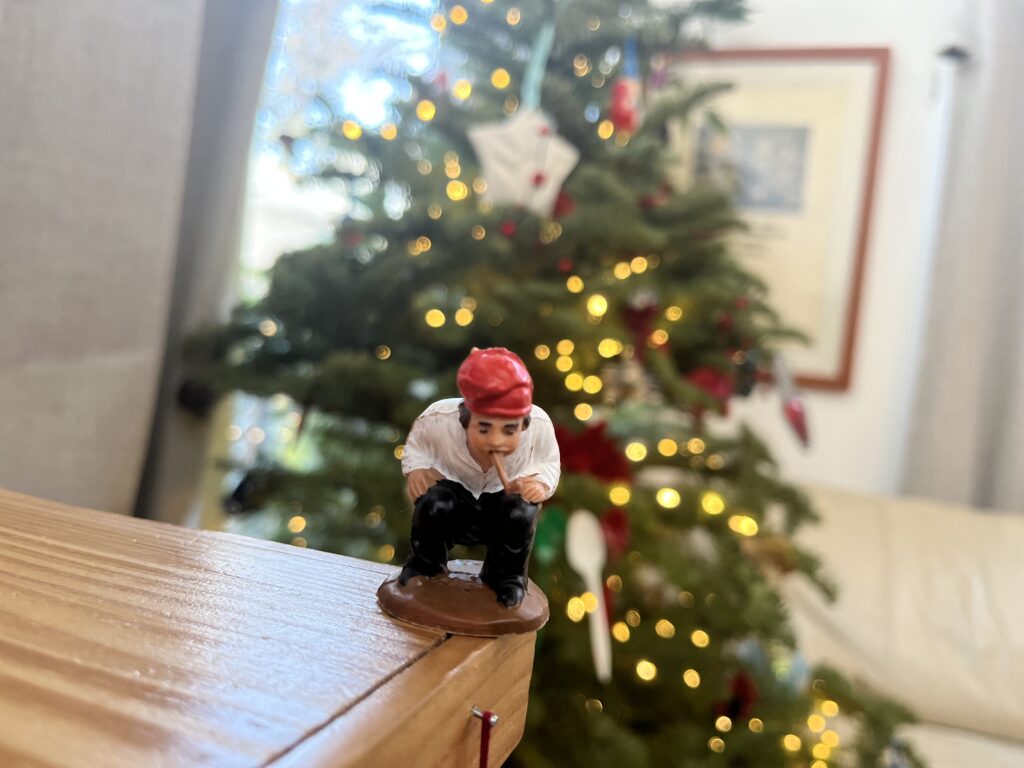
La expectativa se acumula conforme se acerca el día indicado. El tió, que días previos fuimos a buscar al bosque, ya está arropado con una manta bajo el árbol de Navidad.
Entrar a nuestra casa en diciembre y ver un tronco de árbol con ojitos pegados, sonrisa y un gorrito rojo -que se llama barratina-, con un plato vacío delante, podría sorprender a cualquiera; pero en esta familia es común y, para los más pequeños hasta esperado.
El tió es un tronco peculiar, amable y cariñoso. La tradición que antecede al cristianismo proviene de Cataluña, una región al noreste de España en donde se habla catalán.
Los niños y las niñas cada noche deben recordar darle de comer al tió antes de acostarse y al despertar encontrarán que se ha comido todo lo que le dejaron. Así, conforme pasan los días, cada vez se pone más feliz de los cuidados de la casa.
Llega el día esperado. En mi familia siempre se hace el 24 de diciembre en la víspera de navidad, principalmente porque si lo que nos gusta celebrar es lo que representa el tió: la creencia de la que la naturaleza está dormida durante el invierno y que alberga en su interior la abundancia de la primavera, el verano, y la cosecha del otoño. Es el fin y el renacer de algo nuevo. Originalmente se hacía en el solsticio de invierno.
Los niños y niñas de la casa están emocionados y se preparan para pegarle al tió con un palo. Pero antes, hay que mojarlo. Todos van a la cocina o al baño para mojar bien ese palo, unas diez veces baja el grifo basta. El tió espera arropado bajo el árbol a que regresen las criaturas con el palo mojado. ¿Para qué se moja el palo? Pues para pegarle bien al tronco, si no, no sirve la magia.
Regresan corriendo al tió y ahora sí ¡a cantar! Porque si no se canta, tampoco se logra nada.
Caga tió -Caga tió-
Tió de nadal -tió de navidad-
caga turrons d’avellanes i pignons -caga turrones de avellanas y piñones-
no caguis arangades -no cagues arenques-
que són masa salades -que son saladas-
caga torrons -caga turrones-
que són més bons. -que son más buenos.

Mientras se canta la canción se le pega al tronco varias veces, con ganas. Al finalizar la canción, se levanta la manta y ¡ta taaaan! El tió ha “cagado” un regalito para ti. Pueden ser dulces, turrones, regalitos de juguete si te portaste bien durante el año. Pero si te portaste mal, no te sorprendas si el tió caga un pedazo de carbón o un papel de baño.
El tió es mágico para chicos y grandes. Es una tradición que reúne a la familia en torno a una actividad muy divertida tras la cena de Navidad. Nos recuerda la humanidad dentro de todos, pues todos vamos al baño.
El tió originalmente se quema en la chimenea tras los festejos para proveer de luz y calor al hogar, pero como nosotros nunca hemos tenido chimenea sólo lo devolvemos al bosque para que sea feliz y, con suerte, volverlo a encontrar al año siguiente.
Una tradición parecida al tió, también de Cataluña, es el caganer (el que caga). Una figurita originalmente de barro de un campesino vestido de manera típica catalana con la barratina, con los pantalones abajo con las nalguitas al aire, en posición de aguilita, y que está cagando.

No es metafórico, sino se ve claramente en el suelo que la pequeña figura tiene entre las piernas una pequeña mierda. Esta figura no puede faltar en un pesebre catalán. Nos recuerda lo humanos que somos, y representa la fertilidad de la tierra. También, al ser la figura más exótica del pesebre, representa la inclusión de la otredad. Todos somos el o la caganer.
Esta figurita la tenemos en casa en el librero, junto al Daruma y la rana que canta del Perú. Y cada diciembre sale del librero para tomar un lugar estelar en el pesebre junto al árbol.

Te puede interesar: ¡Escartiz rompe todo en Redwood City!

